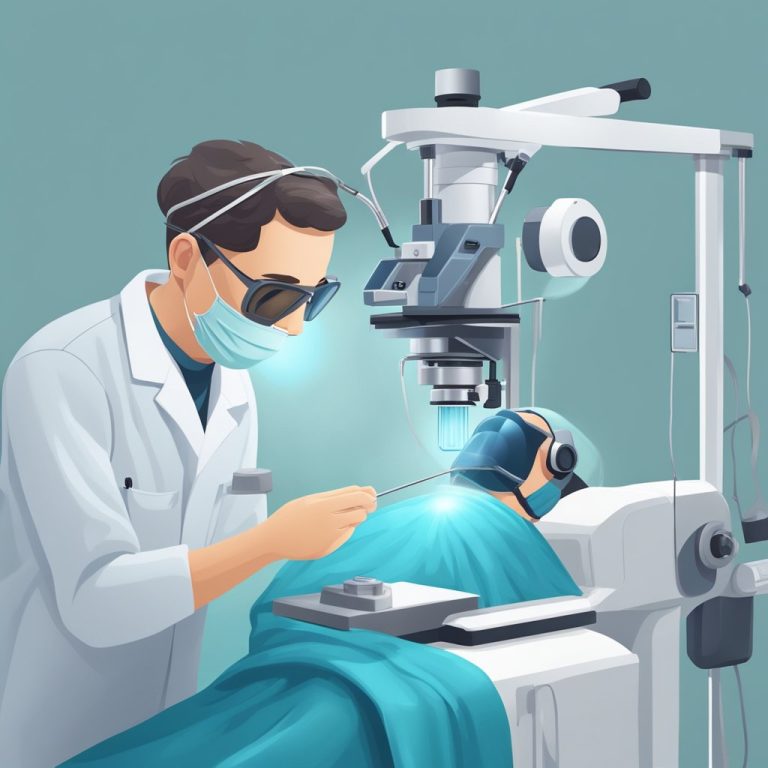Can You Have Pink Eye Without Discharge
Can You Have Pink Eye Without Discharge?Exploring Symptoms and Causes
Pink eye, also known as conjunctivitis, is a common eye condition that can cause redness, itching, and discomfort. It is called “pink eye” because it can make the white part of your eye appear pink or red.
While discharge is a common symptom of pink eye, it is possible to have pink eye without discharge.
There are three main types of pink eye: bacterial, viral, and allergic.
Bacterial and viral pink eye are highly contagious and can spread easily from person to person. Allergic pink eye, on the other hand, is not contagious and is usually caused by an allergic reaction to things like pollen, dust, or pet dander.
Bacterial pink eye is usually accompanied by discharge, which can be thick and yellow or green in color. Viral pink eye, on the other hand, may produce a watery discharge. Allergic pink eye typically does not produce discharge, but it can cause other symptoms like itching, tearing, and swelling.
If you suspect that you have pink eye, it is important to see an eye doctor for an accurate diagnosis.
While pink eye can be uncomfortable, it is usually not serious and can be treated with eye drops or ointments. However, if left untreated, pink eye can lead to more serious complications, such as vision loss.
Symptoms of Pink Eye
Pink eye, also known as conjunctivitis, is a common eye condition that can cause discomfort and irritation. The symptoms of pink eye can vary depending on the cause of the condition.
However, some common symptoms of pink eye include:
- Redness in one or both eyes
- Itching or burning sensation in one or both eyes
- A gritty feeling in one or both eyes
- Tearing
- Sensitivity to light, called photophobia
Identifying Pink Eye Without Discharge
While discharge is a common symptom of pink eye, it is possible to have pink eye without any discharge. In such cases, the other symptoms of pink eye may be more pronounced.
For instance, you may experience redness, itching, and tearing in your eyes.
If you suspect that you have pink eye, it is important to seek medical attention.
Your doctor can help determine the cause of your pink eye and recommend appropriate treatment.
Some common causes of pink eye include bacterial or viral infections, allergies, and irritants.
Causes of Non-Discharging Pink Eye
Pink eye, or conjunctivitis, is a common eye condition that can cause redness, itching, and irritation. While discharge is a common symptom of pink eye, it is possible to have pink eye without discharge.
There are several causes of non-discharging pink eye.
One common cause is viral conjunctivitis. This type of pink eye is caused by a virus and can spread easily from person to person. It typically causes redness and swelling in the eye, but does not usually produce discharge.
Another cause of non-discharging pink eye is allergic conjunctivitis. This type of pink eye is caused by an allergic reaction to substances such as pollen, dust, or pet dander. It can cause redness, itching, and irritation, but does not typically produce discharge.
Bacterial conjunctivitis can also cause non-discharging pink eye. This type of pink eye is caused by bacteria and can produce symptoms such as redness, swelling, and irritation.
While discharge is a common symptom of bacterial conjunctivitis, it is possible to have this type of pink eye without discharge.
It is important to note that non-discharging pink eye can also be caused by other factors such as dry eye syndrome, contact lens irritation, or chemical exposure.
If you are experiencing symptoms of pink eye, it is important to see an eye doctor for an accurate diagnosis and appropriate treatment.
Diagnosis of Pink Eye
Pink eye, also known as conjunctivitis, is a common eye condition that can be caused by viruses, bacteria, allergens, or irritants. The most common symptoms of pink eye include redness, itching, burning, and tearing of the eyes. However, not all cases of pink eye present with discharge.
If you suspect that you have pink eye, it is important to seek medical attention from an eye doctor or healthcare provider for proper diagnosis and treatment.
Your doctor will perform a comprehensive eye exam and ask about your symptoms and medical history to determine the underlying cause of your pink eye.
During the eye exam, your doctor may use a special dye called fluorescein to check for corneal abrasions or ulcers. They may also perform a culture test to identify the specific type of bacteria causing your pink eye, which can help guide treatment.
In some cases, your doctor may order additional tests such as blood tests or imaging studies to rule out other underlying conditions that may be causing your symptoms.
Treatment and Prevention
If you suspect that you have pink eye, it is important to seek medical attention.
Your doctor will be able to diagnose the condition and recommend the best course of treatment.
Depending on the cause of your pink eye, your doctor may prescribe eye drops or ointments to help reduce inflammation and alleviate symptoms. In some cases, oral medications may also be prescribed.
While pink eye can be uncomfortable, there are steps you can take to help prevent the spread of the infection.
If you have pink eye, it is important to avoid touching or rubbing your eyes, as this can spread the infection to other areas of your body. You should also avoid sharing towels, washcloths, or other personal items with others, as this can also spread the infection.
To help prevent pink eye, it is important to practice good hygiene.
This includes washing your hands frequently, especially after touching your face or coming into contact with others who may be sick.
You should also avoid touching your eyes or face with unwashed hands, and avoid sharing personal items such as makeup or contact lenses.
In addition to good hygiene, there are other steps you can take to help prevent pink eye.
This includes avoiding exposure to irritants such as smoke, dust, and chemicals. If you work in an environment where you are exposed to these irritants, it is important to wear protective eyewear to help reduce your risk of developing pink eye.
Frequently Asked Questions
What are the symptoms of pink eye if there is no discharge?
Pink eye, or conjunctivitis, is an inflammation of the conjunctiva, which is the thin, transparent layer of tissue that lines the inside of the eyelid and covers the white part of the eyeball. While discharge is a common symptom of pink eye, it is possible to have pink eye without any discharge.
Other symptoms of pink eye without discharge may include redness, itchiness, and tearing.
Is pink eye contagious when there is no discharge present?
Yes, pink eye can be contagious even when there is no discharge present.
Pink eye can be caused by bacteria or viruses and can be spread through contact with an infected person’s eye secretions, such as tears or mucus.
It is important to practice good hygiene, such as washing your hands frequently, to prevent the spread of pink eye.
How can you tell if red eyes in children are due to pink eye or another condition?
Red eyes in children can be caused by a variety of conditions, including pink eye, allergies, and eye injuries.
If your child has red eyes, it is important to have them evaluated by a healthcare provider.
Pink eye caused by a virus or bacteria is often accompanied by other symptoms, such as discharge, while pink eye caused by allergies may be accompanied by other allergy symptoms, such as sneezing and a runny nose.
What could cause red eyes without pain or discharge?
Red eyes without pain or discharge can be caused by a variety of conditions, including allergies, dry eye, and exposure to irritants such as smoke or chemicals.
It is important to have your eyes evaluated by a healthcare provider to determine the cause of your red eyes and to receive appropriate treatment.
Can you have viral conjunctivitis without any discharge?
Yes, it is possible to have viral conjunctivitis without any discharge.
Viral conjunctivitis is often accompanied by other symptoms, such as redness, itchiness, and tearing.
It is important to have your eyes evaluated by a healthcare provider to determine the cause of your symptoms and to receive appropriate treatment.
What conditions are often confused with pink eye?
Conditions that are often confused with pink eye include allergies, dry eye, and blepharitis. It is important to have your eyes evaluated by a healthcare provider. This will help determine the cause of your symptoms and get you appropriate treatment.







